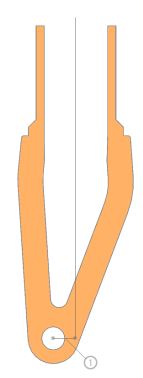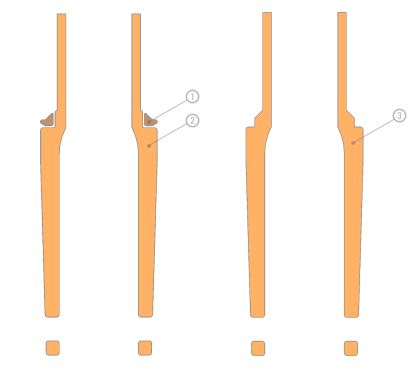General:
The fork is the component that goes through the deck’s head-tube, and where the front wheel is fixed.
Originally, kick scooter forks were threaded and made of steel, but they were heavy and of a bad quality. They have evolved a lot these past few years and these days, most forks are made from one solid piece of aluminium.
Materials:
Today, most of the forks are made of aluminum, and some of them are even forged.
Old forks are made up of two pieces which were either ‘pinned’ or glued together. Examples include FrenchID v.1 Threadless forks or many of the District models. Unfortunately, sometimes what keeps these two parts together loses its strength and as a result, the fork falls apart – bad move.
With mono-bloc forks (made of one piece of aluminum,) forks are more resistant and will last longer.
Steel is rarely used because of its weight, but maybe someday someone will come up with a very good (and light) steel fork.
Weight:
Although the fork weight is not very important compared to the deck, it’s still good to save some weight with the use of a light one.
Today, thanks to the use of 7075 Aluminum, some forks weigh around 200g, whereas 450g was the minimum in 2008.
When choosing your fork, try to focus on the actual quality rather than just the weight.
Wheel compatibly:
Nearly every fork on the market is compatible with 110 mm wheels. Maybe in the future we will see forks able to hold a wheel even bigger.
Offset:

1 : offset
This is the distance between the fork axis and and the front wheel axle. It allows the decrease in bar resistance when you turn.
A Zero-offset fork has its axis aligned with the front wheel axle. They can help make nose manuals easier.
As a ‘distance,’ the amount of Offset is measured in millimeters (mm) and not in degrees as some shops state.
Spacers:

1 : fork
2 : integrated spacer
Fork spacers were originally simple steel washers to separate the bearing from the fork, but these types of spacers can be difficult to install. Then there appeared ‘integrated spacers,’ which are part of the fork.
Most mono-bloc forks have integrated aluminum spacers, but they can be fragile due to the friction between the aluminum of the spacers and the steel of the bearings, which can wear away at the spacers.
Steel integrated spacers are the best, as they are the most resistant.
Threaded fork:
A long time ago, all the forks were threaded, and a large nut was planed around the fork, to tighten the headset.
These old forks, both heavy and fragile, have almost disappeared from the market.
Crown race:

1 : crown race
2 : fork
3 : fork with integrated crown race
On previous generation forks, the Crown Race for the headset is integrated, making installation quick and simple.
However, these forks may not be compatible with all types of headsets.
My Cart
0
- empty